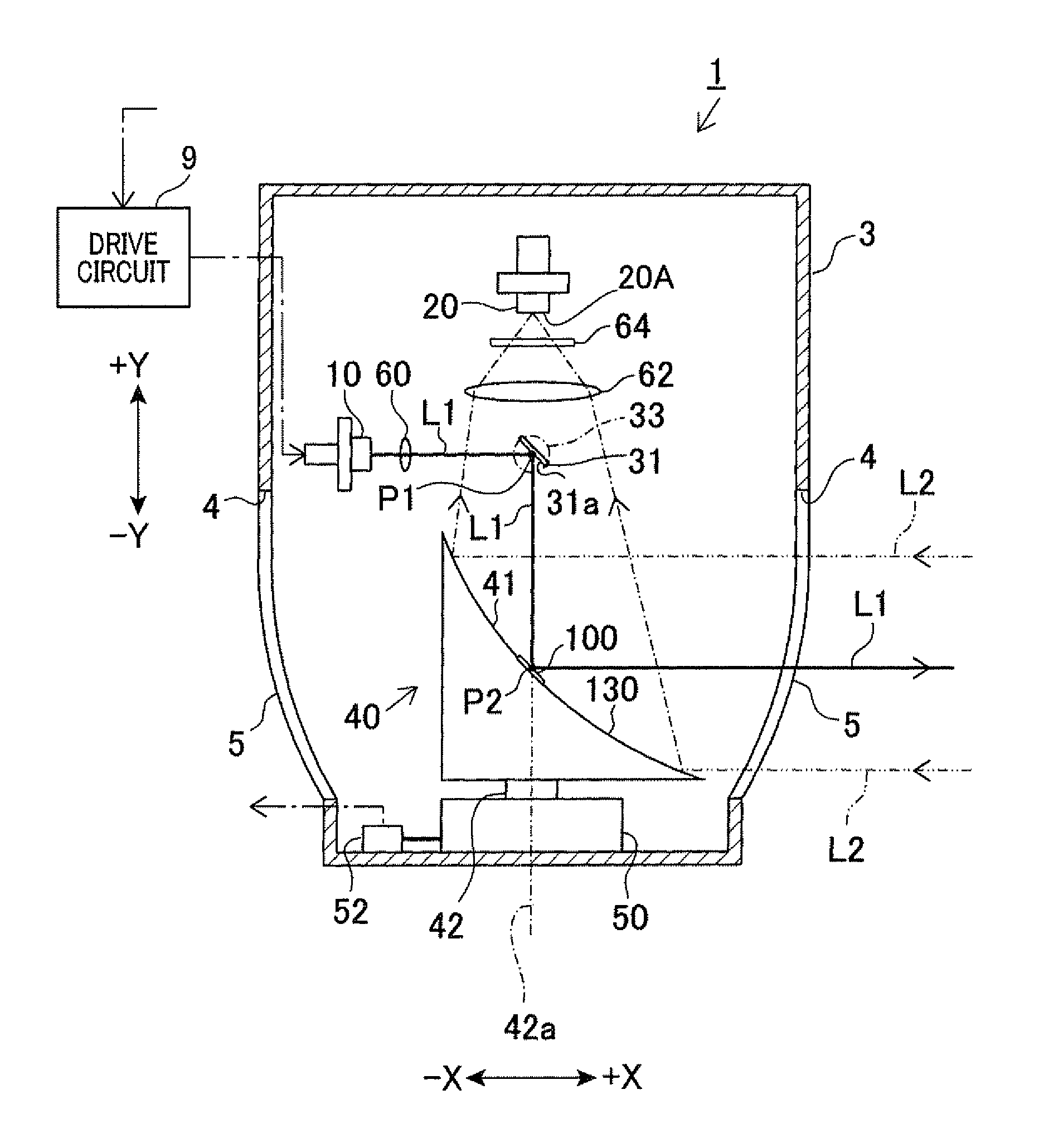Laser radar for three-dimensional scanning
a laser radar and three-dimensional scanning technology, applied in the direction of distance measurement, height/levelling measurement, instruments, etc., can solve the problems of difficult three-dimensional detection of targets, limited detection range, and inability to detect laser beams reflected externally from concave mirrors out of scan planes. to achieve the effect of reducing the load imposed in changing the orientation
- Summary
- Abstract
- Description
- Claims
- Application Information
AI Technical Summary
Benefits of technology
Problems solved by technology
Method used
Image
Examples
first embodiment
[0059](First Embodiment)
[0060]Referring to FIGS. 1 to 14 and FIG. 29, a first embodiment to which the present invention is applied is described.
[0061]First, general configuration of a laser radar 1 according to the first embodiment is described. FIG. 1 is a schematic cross-sectional view illustrating the laser radar 1. FIG. 2 is a diagram illustrating a correlation between angle of laser beam radiated to a deflector and a radiation angle from the deflector.
[0062]As shown in FIG. 1, the laser radar 1 includes a laser diode 10 and a photodiode 20. The laser radar 1 is configured to detect a distance to and a direction of a target of detection.
[0063]The laser diode 10 corresponds to the laser beam generating means and is made up of a known laser diode. The laser diode 10 is supplied with pulsed current from a drive circuit 9 to intermittently emit a pulsed laser beam (laser beam L1) at a predetermined interval according to the pulsed current.
[0064]The photodiode 20 is made up of a know...
second embodiment
[0141](Second Embodiment)
[0142]Referring now to FIGS. 15 to 28 and FIG. 30, hereinafter is described a second embodiment of the present invention.
[0143]FIG. 15 is a schematic perspective view illustrating the vicinity of a concave mirror of a laser radar according to the second embodiment. FIG. 16 is a diagram illustrating a correlation between angle of laser beam radiated to a deflector and radiation angle from the deflector, according to the second embodiment. FIG. 17 is a perspective view illustrating a configuration in the vicinity of a scan beam reflector of the laser radar illustrated in FIG. 15. FIG. 18 is a plan view illustrating a configuration in the vicinity of the scan beam reflector of the laser radar illustrated in FIG. 15. FIG. 19A is a schematic cross-sectional view taken along an azimuth direction of 0° to 180° of FIG. 18. FIG. 19B is a schematic cross-sectional view taken along an azimuth direction of 45° to −135° of FIG. 5.
[0144]In the present embodiment as well, ...
PUM
 Login to View More
Login to View More Abstract
Description
Claims
Application Information
 Login to View More
Login to View More - R&D
- Intellectual Property
- Life Sciences
- Materials
- Tech Scout
- Unparalleled Data Quality
- Higher Quality Content
- 60% Fewer Hallucinations
Browse by: Latest US Patents, China's latest patents, Technical Efficacy Thesaurus, Application Domain, Technology Topic, Popular Technical Reports.
© 2025 PatSnap. All rights reserved.Legal|Privacy policy|Modern Slavery Act Transparency Statement|Sitemap|About US| Contact US: help@patsnap.com



